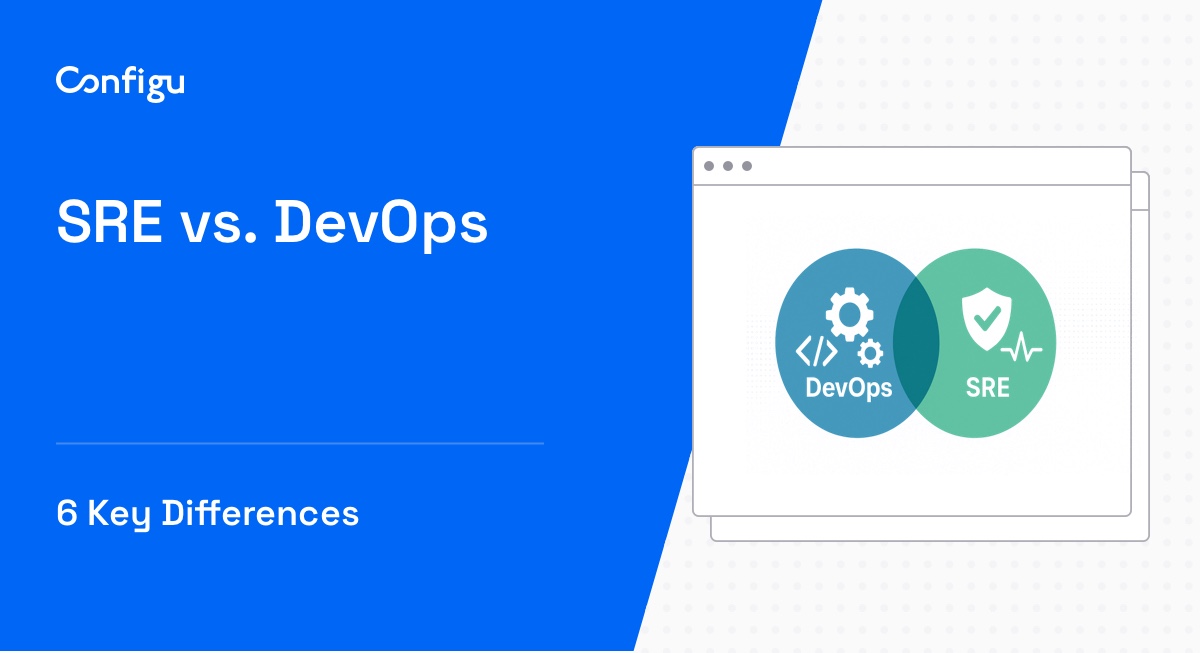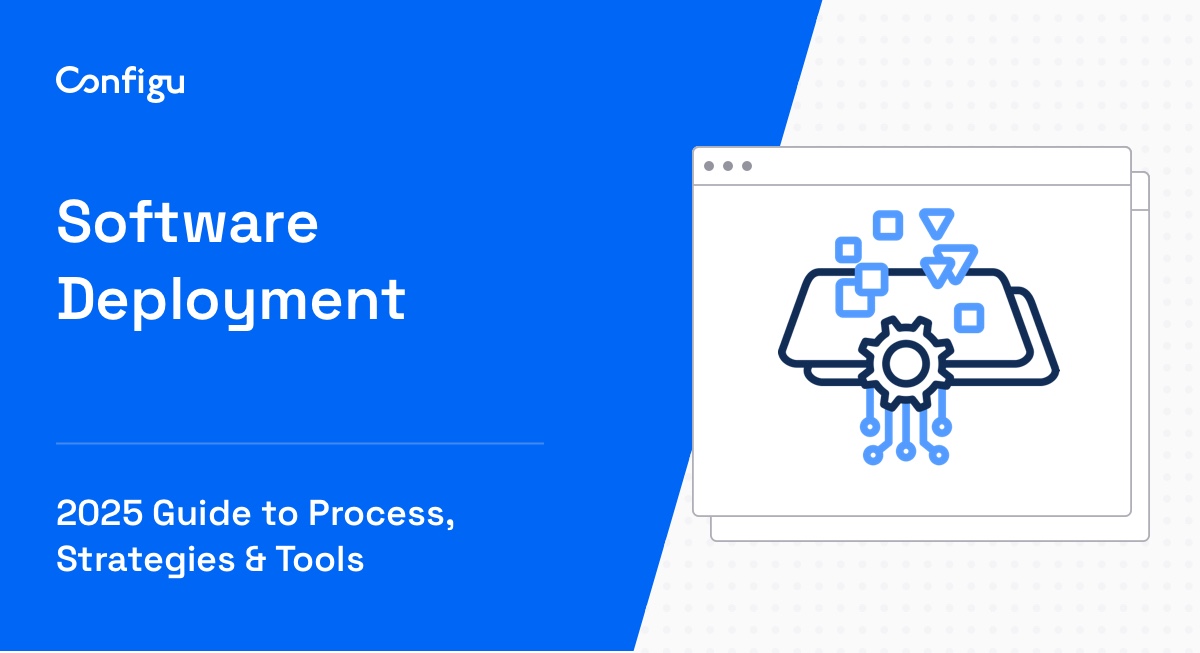What Is a Configuration Management Plan?
A configuration management plan (CMP) organizes and outlines how configuration management will be implemented within a project or organization. It defines the procedures and tools used to monitor, control, and manage changes to software configurations throughout the lifecycle. By establishing a structured approach to identifying, controlling, and auditing configuration items, a CMP ensures consistency and traceability.
The plan helps maintain the integrity of systems by identifying deviations from desired configurations and coordinating necessary adjustments. It specifies how changes are documented, assessed, approved, and implemented to minimize disruptions while ensuring that all stakeholders have visibility into configuration states. This documentation reduces complexity and enhances communication across teams.
In this article:
What Is the Purpose of a Configuration Management Plan?
Facilitating Asset Management
Configuration management plans play a role in facilitating asset management by creating an inventory of system components and their respective configurations. This inventory serves as a reference point for tracking each asset’s status throughout its lifecycle, from acquisition to disposal. By maintaining this level of visibility, organizations can optimize their asset utilization, predict maintenance needs, and ensure that all assets are accounted for and in compliant states.
Improving Incident Response, Help Desk, and Disaster Recovery
A configuration management plan enhances incident response by providing a detailed map of the system configurations, which helps identify the root causes of problems quickly. By having this data readily available, response teams can efficiently diagnose and implement solutions, reducing downtime and limiting the impact of incidents on operations.
In addition to improving incident response, a CMP aids disaster recovery planning by ensuring that all configuration data is documented and easily accessible. This documentation is vital when reinstating systems to their pre-disaster states, facilitating quick recovery processes. Moreover, problem-solving benefits greatly since teams have all configuration histories at their fingertips, enabling them to devise strategies grounded in factual and historical information.
Supporting Compliance and Preparation for Audits
Configuration management plans are critical in ensuring compliance with industry standards and internal policies. By meticulously documenting all configuration changes and providing audit trails, organizations can demonstrate adherence to necessary guidelines during audits. This transparency is crucial in industries where regulatory compliance is stringently monitored.
Preparing for audits becomes a structured and less daunting process when a CMP is in place. Documentation produced through configuration management serves as a reference for auditors, facilitating thorough review processes. The ability to trace how configurations have changed over time provides the necessary clarity and proof of compliance.
What Goes Into a Configuration Management Plan?
A configuration management plan (CMP) outlines the core components and processes needed to manage the configuration of a system effectively:
- Configuration identification: The CMP must define how configuration items (CIs) will be identified, tracked, and managed throughout their lifecycle. This includes specifying serial or lot numbers, metadata requirements, and the level of detail needed for each item. As the project evolves, the scope of configuration identification expands, especially as hardware, software, and maintenance requirements come into play.
- Change control: The CMP should outline the processes for managing changes to configuration items. This includes classifying changes (minor, major, or critical) and establishing a change control board (CCB) responsible for approving or rejecting changes. The CMP must also define how change requests, notices, and deviations are handled, ensuring that all changes are controlled and documented systematically.
- Configuration status accounting: This involves tracking the status of configuration items and changes. The CMP should specify how changes will be recorded, reported, and measured, including metrics for tracking the implementation of changes. It must also ensure that all documentation, such as drawings, procedures, and reports, are updated accordingly.
- Configuration audits: The CMP must include procedures for verifying and auditing configuration items. This can involve functional and physical audits to ensure that CIs meet baseline requirements and that all changes have been accurately incorporated. Audits provide a way to validate that the system adheres to both functional and contractual requirements.
- Lifecycle and oversight: The CMP should evolve with the lifecycle of the system or project. It must define how configuration management processes will be integrated into various phases of the lifecycle and how oversight will be maintained, particularly in complex projects with multiple vendors or subcontractors.
Tips From the Expert
In my experience, here are tips that can help you better adapt to configuration management planning:
- Incorporate automated drift detection: Use tools that automatically detect and notify stakeholders when configuration drifts from the baseline. Automated drift detection allows teams to catch inconsistencies before they lead to major issues, minimizing downtime and enabling swift corrective action.
- Prioritize configuration dependencies: Map out and document the interdependencies between configuration items (CIs) early in the project. This ensures that changes made to one component don’t inadvertently affect others, reducing risk during updates and deployments.
- Integrate CMP with DevOps pipelines: Ensure your configuration management process is seamlessly integrated into your DevOps pipeline. Automating configuration checks during CI/CD (Continuous Integration/Continuous Delivery) can catch issues early and enforce configuration consistency throughout the development lifecycle.
- Leverage immutable infrastructure where possible: Consider adopting immutable infrastructure principles, where systems are replaced rather than updated in-place. This reduces configuration drift over time, simplifies rollback strategies, and enhances the reliability of the system state.
- Maintain configuration versioning: Use version control systems to manage configurations, much like code. This allows for easy tracking of changes, detailed auditing, and rollback capabilities, as well as collaboration across teams.
Best Practices for Creating an Effective a Configuration Management Plan
Determine Project Roadmap
Determining a project roadmap involves outlining the project objectives and phases in a configuration management plan. This roadmap should capture critical milestones, associated tasks, and the resources required to achieve targeted outcomes. Mapping out these pathways ensures all team members are informed about the project’s trajectory and can align their efforts to specific goals.
A well-defined roadmap accounts for potential risks and includes contingency plans to address them, providing clarity on how the configuration management will evolve with project progress. Making this plan collaborative enhances its relevance and ensures that all contributors are on the same page regarding expectations, timelines, and deliverables.
Define Roles and Responsibilities
Defining roles and responsibilities in a configuration management plan involves detailing who is accountable for each aspect of configuration management. By establishing clear lines of responsibility, each team member understands their specific duties, which enhances accountability and efficiency. This clarity minimizes confusion and ensures that configuration management activities are coordinated effectively.
Assigning roles also involves designating authorities for decision-making, especially regarding changes in configurations. This structure enables a streamlined process for evaluating, approving, or rejecting proposed changes, which is essential for maintaining system integrity and avoiding unnecessary disruptions.
Identify the Configuration Items of the System
Identifying configuration items is about determining which components require tracking and management. These can include hardware, software, networks, and documentation that collectively create the system’s architecture. Recognizing what constitutes a configuration item ensures that all critical parts of the system are maintained and monitored throughout their lifecycle.
Comprehensive identification enables precise management and control over each item’s configuration state. This foresight prevents lapses in maintenance and facilitates quick responses when updates or changes are necessary. Ensuring thorough documentation of these items provides a clear reference that helps prevent unauthorized changes.
Determine a Configuration Baseline for Each System
Determining a configuration baseline involves establishing a reference point for a system’s configuration settings. This baseline serves as a standard against which future changes are measured, ensuring configurations remain consistent with organizational standards and requirements. By setting a stable foundation, teams can track deviations and address them promptly.
A baseline also aids in troubleshooting, providing an initial state comparison when identifying the cause of issues. Establishing baselines involves meticulous documentation and updating processes, which guarantee that all changes are systematic and traceable.
Develop a Configuration Management Process
Developing a configuration management process requires laying out procedures for recording, monitoring, and adjusting system configurations. This process includes methods for documenting changes, evaluating their impact, and establishing approval workflows to ensure modifications are necessary and beneficial. A structured process minimizes errors and supports efficient management of configurations.
This process sets the foundation for consistency in configuration management activities. It includes protocols for updating documentation and executing changes, ensuring transitions are smooth and predictable. Clearly defining these steps supports the organization in implementing changes while maintaining control over configuration states.
Identify Tools to Use to Implement and Monitor Configurations
Identifying the right tools for implementing and monitoring configurations is essential for achieving efficiency and accuracy in configuration management. These tools facilitate automated tracking, updating, and reporting on configuration states, which helps in maintaining consistency and reducing manual intervention.
Selecting the appropriate tools involves evaluating their capabilities to meet the organizational needs, such as integration with existing systems and scalability. Effective tools enable real-time monitoring and reporting, providing stakeholders with up-to-date information about configuration statuses. This access to timely and accurate data supports informed decision-making.
Automating Configuration Management with Configu
The Configu Orchestrator is an open source project that implements the concept of Configuration-as-Code with powerful CI/CD integration and other advanced features, such as type validation, version control, managing multiple environments and more.
Check out the GitHub repository. If you like it, give us a ⭐.



